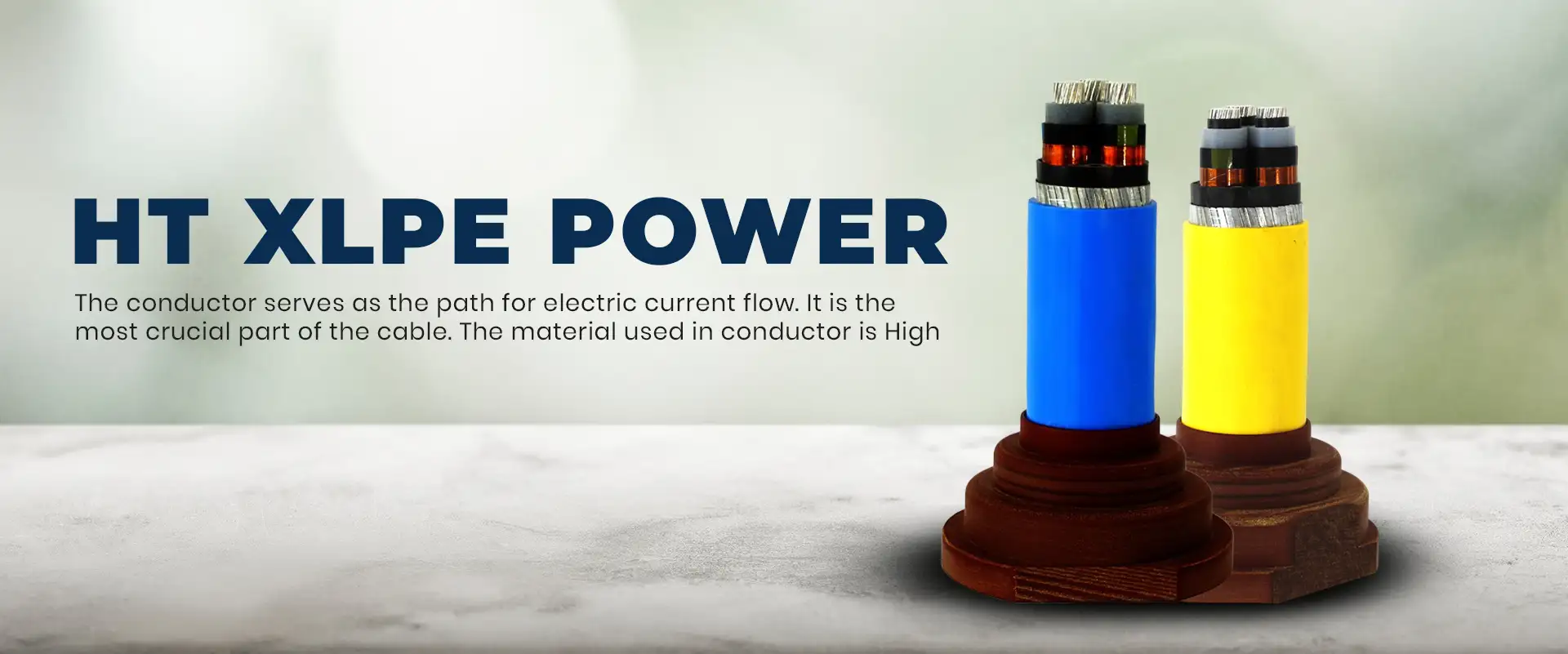
The conductor serves as the path for electric current flow. It is the most crucial part of the cable. The material used in conductor is High conductivity, Electrolytic-grade Aluminium and annealed copper as per IS 8130. Shape of conductor is Stranded Compacted Circular / Shaped conductor.
Conductor Screen:
This is a layer of cross linkable semiconducting compound. It is extruded directly over the conductor. It not only eliminates any sharp points on conductor surface but also nullifies the chance of electric discharge at the interface between conductor & insulation.
The insulation is of natural, Cross Linked Polyethylene (XLPE) extruded over conductor screen. XLPE Insulation is capable of operation continuously at 90°C and XLPE insulation is known for its excellent thermal and dielectric properties. The thickness of the XLPE insulation varies depending on the voltage rating of the cable.
Non Metallic Insulation Screen:
This is a layer of cross linkable semiconducting compound extruded directly over the Insulation at the same time when conductor screen and insulation are extruded. These are extruded in one operation by TRIPLE EXTRUSION which eliminates the formation of micro voids during the extrusion and curing resulting in longer life of cables. It is provided to maintain uniform electrical field and smooth insulation interface. It is tightly bonded to prevent partial discharges and maintain long term performance.
The metallic Screen can be helically applied copper tape or a number of copper wires applied over semiconducting screen to carry an earth fault current. This ensures that the surface of insulation is at ground potential and hence no surface discharge and electric field will be radial in nature.
For Three core cable, insulated cores are laid up together with Non hygroscopic PVC or Polypropylene Fiber fillers to maintain circularity of cable. The core identification of three core cable is done either by coloured strips /numbered applied on the cores.
Polyvinyl Chloride (PVC) or Polyethylene (PE) compound is extruded over the laid up cores. The laid up cores shall be provided with inner sheath applied either by extrusion or by wrapping as per customer requirement. It shall be ensured that the shape is as circular as possible. It provides bedding for armour layer.
It is an extruded layer of polyvinyl chloride (PVC) or Polyethylene (PE) material over armour. For single core unarmoured cables the outer sheath is extruded over the non-magnetic metallic part of insulation screen. It Protects the cable against environmental factors (moisture, sunlight, chemicals, rodents, etc.)
Fire Performance – Critical Applications
For enhanced fire safety, the following special PVC sheath compounds may be used:
Additional Protective Properties
For harsh or exposed installations, sheath compounds may also be enhanced with:
Galvanized steel armour are applied over the inner sheath in case of three core cables and for single core cables, non-magnetic armouring is applied over the inner sheath. The direction of lay of armouring shall be left hand. The purpose of armour is to give mechanical protection to cables. It also acts as a return path for earth fault current. For cables with a calculated diameter under armouring not exceeding 13 mm, armouring shall consist of round wires and for cables with a calculated diameter under armouring greater than 13 mm, armouring may consist of either round wires or strips.
As per IS 7098 Part 2, the codes are :
| Constituent | Code |
| Aluminium conductor | A |
| XLPE insulation | 2X |
| Steel round wire armour | W |
| Non-magnetic round wire armour | Wa |
| Steel strip armour | F |
| Non-magnetic strip armour | Fa |
| Double steel strip armour | FF |
| Double steel round wire armour | WW |
| PVC Outer sheath | Y |
| Polyethylene outer sheath | 2Y |
1. Power Transmission and Distribution
2. Industrial Installations
3. Underground Power Networks
4. Indoor and Outdoor Installations
5. Renewable Energy Projects
6. Infrastructure and Metro Projects
7. Temporary and Emergency Power